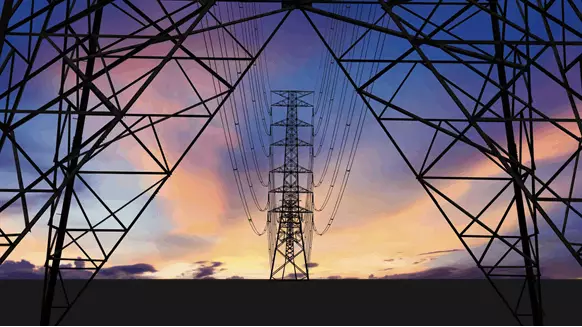
New report highlights the staggering cost of green ‘delusions.’
By James FreemanAug. 26, 2022 4:50 pm ET
…
In a new report due out next week from the Manhattan Institute, Mark Mills takes on the “dangerous delusion” of a global energy transition that eliminates the use of fossil fuels. Surveying energy markets and public policy around the world, Mr. Mills asks readers to “consider that years of hypertrophied rhetoric and trillions of dollars of spending and subsidies on a transition have not significantly changed the energy landscape.” He notes:
…
Claims that wind, solar, and [electrical vehicles] have reached cost parity with traditional energy sources or modes of transportation are not based on evidence. Even before the latest period of rising energy prices, Germany and Britain—both further down the grid transition path than the U.S.— have seen average electricity rates rise 60%–110% over the past two decades. The same pattern is visible in Australia and Canada. It’s also apparent in U.S. states and regions where mandates have resulted in grids with a higher share of wind/solar energy. In general, overall U.S. residential electricity costs rose over the past 20 years. But those rates should have declined because of the collapse in the cost of natural gas and coal—the two energy sources that, together, supplied nearly 70% of electricity in that period. Instead, rates have been pushed higher thanks to elevated spending on the otherwise unneeded infrastructure required to transmit wind/solar-generated electricity, as well as the increased costs to keep lights on during “droughts” of wind and sun that come from also keeping conventional power plants available (like having an extra, fully fueled car parked and ready to go) in effect by spending on two grids.
…
President Joe Biden is unlikely to listen to such an explanation and who knows if he would even understand it. But reality’s not going anywhere.
The Wall Street Journal also discusses the disparity in cost between battery energy storage vs a bulldozer assembled heap of coal.
Given the numbers so obviously indicate renewable energy is a non-starter, why do green advocates keep claiming that the numbers add up?
The answer appears to be blind faith and optimism. The numbers don’t currently add up, but they expect prices to keep falling, just as prices have fallen over the last decade. From the United Nations;
Falling clean energy costs provide opportunity to boost climate action in COVID-19 recovery packages
10 JUN 2020 PRESS RELEASE ENERGY
…
The all-in, or levelized, cost of electricity continues to fall for wind and solar, thanks to technology improvements, economies of scale and fierce competition in auctions. Costs for electricity from new solar photovoltaic plants in the second half of 2019 were 83 per cent lower than a decade earlier.
…
“If governments take advantage of the ever-falling price tag of renewables to put clean energy at the heart of COVID-19 economic recovery, they can take a big step towards a healthy natural world, which is the best insurance policy against global pandemics,” Andersen said.
…
These otherwise smart people have drawn a nice curve on their graphs, where they fitted the 83% cost reduction over the last decade. Some of them expect that exponential looking curve to continue indefinitely, giving us the “ever-falling price tag of renewables”.
Moore’s law and renewable energy
by Bill Spindle Jul 27, 2021
…
To date, renewables have benefited from something akin to Moore’s Law –– as they grew exponentially, and got cheaper, causing faster growth –– a virtuous cycle. As more grid-scale battery storage comes online, providing stability for wind and solar power, the batteries are also becoming cheaper.
The trend has enticed a diverse array of entities to jump in –– from the conservative city of Georgetown, Texas which sources 100% of its power from renewable sources to tech giant Microsoft Corp. aiming for carbon negativity by 2030 using a combination of renewable energy and carbon removal technologies.
But the path may not be as smooth as goals and targets suggest. Recently New York State officials unveiled a new goal of carbon neutrality by 2050, promising a completely decarbonized electricity system. But shortly after, the New York Independent Systems Operator (NYISO), the body responsible for operating the state’s energy grid, issued a statement saying that a 70% renewable power system by 2030 is “very achievable” but that getting to 100% renewable sources will require technology that does not yet exist.
…
One of the first things I learned about statistics is extrapolation, extending the trend line beyond the data, is risky. You can fit a naive trend line to rising stock prices, and extrapolation will tell you any time is a good time to buy. The crash, when it occurs, is an unexpected departure from the naive extrapolated trend.
Yet the people pushing renewable energy, instead of waiting for the data to catch up with the trend line, are pushing the entire world to gamble the future of all of us on their faith that the costs of renewable technology will be “ever-falling”, will continue to fall at a rate comparable to the last decade.
And if the costs don’t fall according to the plan – there is always the option of throwing endless government money at developing “technology that does not yet exist”, David Attenborough’s Renewable Apollo Project.
Imagine a hundred years from now. Future historians will surely see this global gamble of trillions of dollars on “technology which does not yet exist”, this blind faith in trend lines, as an outbreak of mass hysteria they will struggle to explain.
Think about the actual Apollo Project. NASA didn’t dive straight into building the moon launcher, they built prototype after prototype, like Project Mercury. Each prototype was a stepping stone, which provided learnings which made the next step possible.
Personally I’d prefer to wait until the “technology that does not yet exist” is developed, at least to prototype stage, before gambling everything on a green transition which likely isn’t possible.



